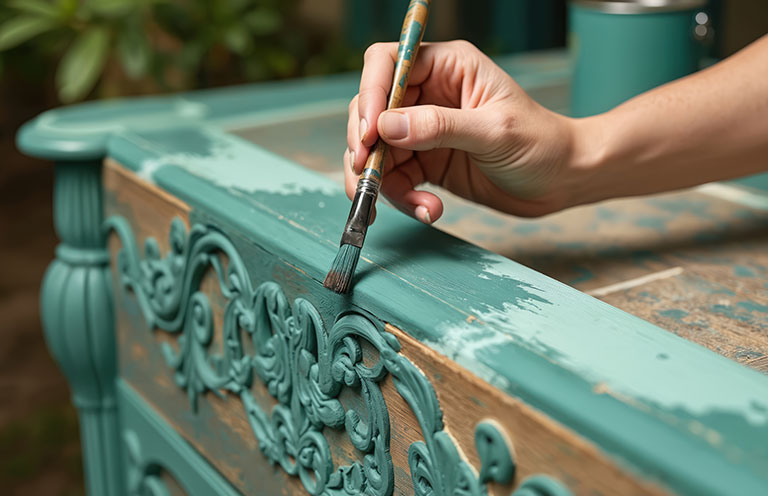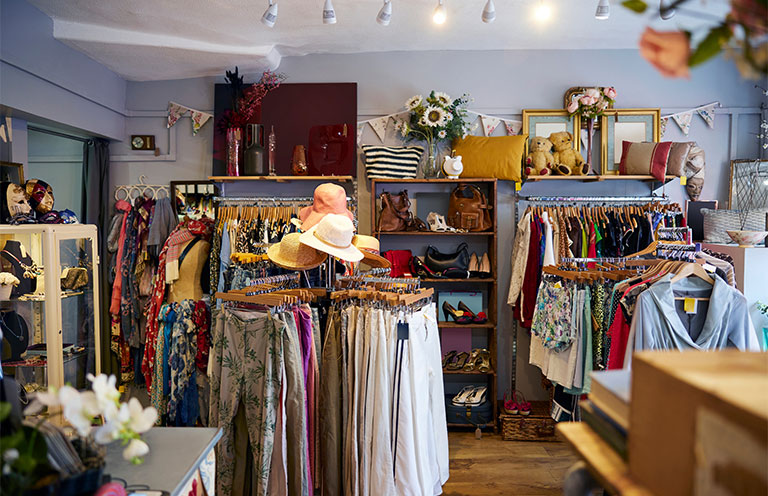9 Expert Tips to Thrift Like a Pro
From thrifting for furniture and home decor to clothing and accessories, here’s how to save sourcing secondhand goods—without sacrificing quality or style


As consumer prices continue to rise, many shoppers have discovered the value of secondhand shops, be it a thrift store, consignment boutique, or stall in an antique mall. These businesses are popular for several good reasons.
For one, buying secondhand is good for the environment. Fast-fashion manufacturing is responsible for high carbon emissions and waste.
Shopping in secondhand stores is “one of the easiest ways individuals can live more sustainably,” says Lisa Rusyniak, president and CEO of Goodwill Industries of the Chesapeake. “And for families on a budget, it’s a lifeline.”

Buying a time-tested item is another reason to shop secondhand. New, low-quality furniture often needs replacing within 10 years, says Stacy Verdick Case, owner of Peony Lane Designs, which sells vintage items. Vintage and repurposed furniture and home goods were built to last, she notes. “That’s why thrift stores are filled with still-usable items from the 1950s, ’60s and ’70s.”
Fashionistas with a penchant for used clothing can create a distinctive style. “You can get something nobody else has,” says Terran Fielder, a media specialist on EarthDay.org’s communication team. “So, this way of shopping is much more individualistic.”
Admittedly, it takes more effort to buy secondhand than it does to click “checkout” on Amazon, but it’s also clearly worth the effort. Here are nine expert tips to start your thrifting endeavors with success.
1. Set a budget.
Visiting a thrift shop is no different from shopping in a big box store: There’s a propensity to purchase what you probably don’t need. You may be more likely to spend in a secondhand shop if the item is one of a kind. “It’s easy to get carried away with so many low-cost options,” Rusyniak says. Set your limits, and stick to them.

2. Make a list.
Kendra Hagerman, CEO and owner of Kendra Found It, a budget and lifestyle home blog,
keeps a wish list on her phone. It might include drink coasters, faux flowers, and a new mirror for her guest bedroom.
Fielder’s basic list includes vintage work skirt suits, dresses, and good-quality denim jeans. “They are so much better made, and they hang better on you as a result,” she says.
She then checks out the handbags, purses and jewelry. “I have found several leather handbags made in Italy,” she says. “Nowadays, even the top labels make things in China and are not as well made or as nice.”
3. Be open-minded.
Even if you go with a list, every trip to the thrift store is different, which makes it an adventure, Hagerman says. “If you go with one specific item in mind, you can miss other finds,” she says.
4. Go often and go early.
The early bird gets the find. That’s because the inventory changes daily at most thrift stores, Rusyniak says. Don’t be ruled by the seasons. You may find a designer winter coat in summer, for example.
Look for opportunities. “If I’m near a store and have 20 minutes, I’ll pop in just to check things out. Visit as often as you can, and you’ll have a higher chance of finding some gems,” Hagerman says. “There is always an element of luck involved.”

5. Practice upcycling.
The upcycle approach works best if you’re handy—or willing to take a risk. For instance, use paint and decals to give a battered dresser a new life. Get out your sewing kit to repair a torn hem. “Don’t be afraid of a little DIY,” Rusyniak says.
6. Turn to YouTube.
If you’re not crafty, Verdick Case has a YouTube channel that shows viewers how to upcycle items. For instance, she demonstrates how to spray-paint a metal lamp and use liquid sandpaper. “It’s rewarding, cost-effective, and helps reduce waste,” she says of upcycling.

7. Join a loyalty program.
Many stores have free loyalty programs, Hagerman says. “While it may seem silly to get points on a $4 item, they add up over time,” she notes.
8. Clear the clutter.
It’s easy to amass a collection of secondhand goods. Keep your closet and your conscience balanced by gifting to a thrift shop with a purpose, Rusyniak says. You’re decluttering and earning a tax deduction at the same time.
If you want to earn money, use a consignment shop. Always read the paperwork carefully; some consigners keep unsold items after a specified period.
9. Enjoy the adventure.
Thrifting is not for everyone, of course. It helps if you enjoy the process.
“I find thrifting relaxing and a fun way to explore my creativity—I love a good DIY project,” Hagerman says. “So, even if I don’t buy anything, I had a great experience.”
